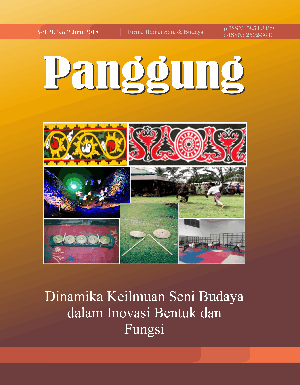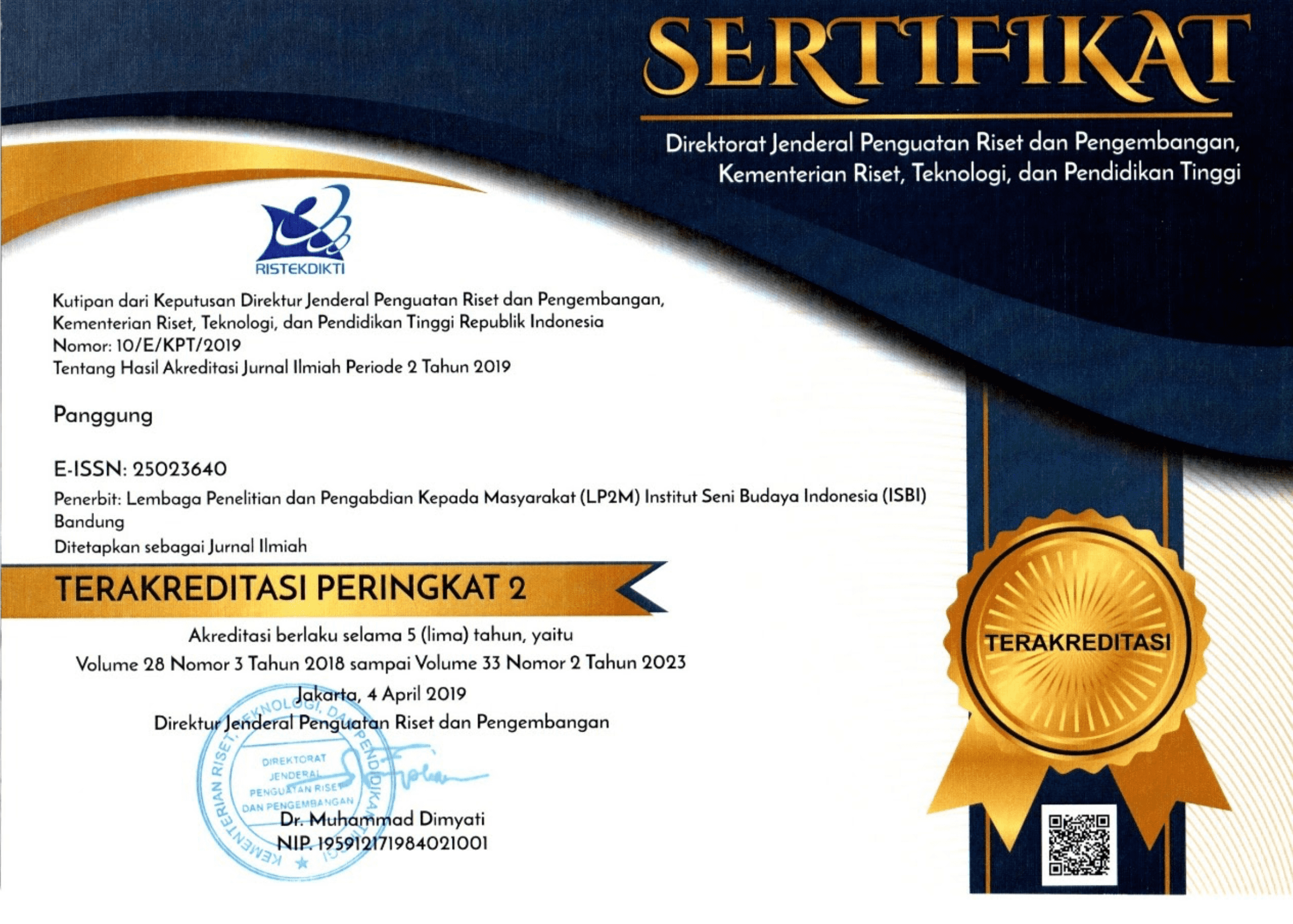Vol. 28 No. 2 (2018): Dinamika Keilmuan Seni Budaya dalam Inovasi Bentuk dan Fungsi

Panggung in this edition provides 9 articles with the theme “Dinamika Keilmuan Seni Budaya dalam Inovasi Bentuk dan Fungsi.” This theme describes how the science of arts is dynamic in its development as well as its interactions among different disciplines as shown in various arts forms and their functions discussed in the articles. Among different art formsexamined in this edition, dance is a main focus in six articles. Vinlandari et al. discuss a form of local dance, Tari Pakujajar, as a means for transforming Sundanese values to students through learning process in a junior high school (SMP)in Sukabumi, West Java. Meanwhile, Irdawati and Sukri, Wahyuni et al., Herawati and Prihatini explore the development and reconstruction of local dances in several cities of Indonesia: in Riau, Minangkabau, and Surakarta, to see how those dances transformed, changed, and reconstructed into new forms. Further, Supriyanto approaches dance in the studyof the embodiment by using the events of Indonesia Dance Festival and Sasikirana Dance Camp as a case study. Following this, Sudibya pays attention to the role of fire as a main facet in Balinese culture, including in several forms of Bali dances. Another article from Sobarna et al. discuss toponymy of places in Banyumas regency, Central Java, as a border zone between Sundanese and Javanese culture by which the two cultures mix together in the area. Last but not least, Yuliansyah deliberates visual aspects in advertisement as a core of study explaining discursive and presentational aspects in the ads of “Indonesia Milik Siapa?”




